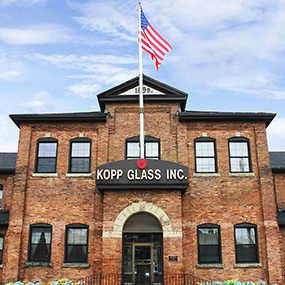Kopp Glass will feature their moldable, UV transmitting glass compositions at the upcoming 2021 IUVA World Congress Virtual Conference and Exhibition. Unlike other UV transmitting materials, Kopp’s unique, proprietary UV glass exhibits high transmission and mechanical durability across the UV-A, UV-B and UV-C light spectrum and can be molded into complex and contoured geometries that are often difficult and expensive to achieve through machining or fabrication.
Michael Ulizio, New Product Development Engineer, will present new research discussing “UV Transmitting Glass Optics to Improve Light Output for UV-C LED Applications” on Tuesday, June 8th at 2:30 PM during Session 9A Technology Trends: UVC-LED. Michael will examine two application case studies highlighting the use of common optic types, Batwing and TIR optics, to help address the challenges of cost, efficiency, and light distribution associated with UV-C LED application use.
“Optics enhance and improve the light distributions of UV-LEDs, by covering more lateral area in the air (requiring fewer LEDs to cover a specified area) and increasing surface irradiance at a distance to achieve application irradiance and dosage targets (with fewer LEDs),” says Mr. Ulizio.
When paired with UV-C LEDs, UV transmitting glass optics allow for design flexibility to overcome application challenges and achieve unique performance goals. Kopp’s specialized manufacturing process offers scalability, from prototyping to full-scale production which results in accelerated time to market for new and innovative products that make a meaningful difference in the world. Visit Kopp’s virtual booth to learn more about moldable UV transmitting glass compositions and how pairing a molded UV glass optic with UV-C LEDs can help to achieve your unique application goals.
Click here to learn more about Kopp’s moldable, UV-C transmitting glasses
The 2021 IUVA World Congress will take place virtually on June 7th & 8th. This event focuses on the latest and emerging advancements in UV technology and research addressing the environmental, health, and treatment process challenges of today, as well as the current trends in UV regulations and new applications.

